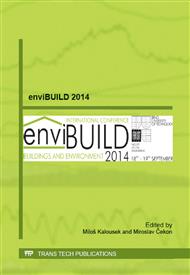p.35
p.39
p.43
p.47
p.51
p.55
p.59
p.63
p.67
Comparison of Low-Energy Houses Selected Parameters Made by Traditional and Modern Methods of Construction
Abstract:
Currently, in the building industry is emphasizes the sustainability of construction. Sustainable buildings have low costs for energy consumption and operations, they are environmentally friendly, able to save natural resources and they are comfortable and healthy for their users. One of the factors contributing to this requirement is also application of more or less known materials and components through modern methods and technologies. Modern methods of construction (MMC) can be the way, how to achieve buildings, that can minimise the negative impacts of building life cycle on the environment. MMC can, in addition to increasing the efficiency of the construction, ensure the requirements resulting from Agenda 20-20-20 in energy consumption. The paper is focused on the research and comparison of two low-energy houses groups from technical and quality indicators point of view and especially from the perspective of relationship between construction cost and building volume. One of the groups is low-energy houses made of bricks by traditional methods (TM) and the second group representative of modern methods of construction are low-energy houses made of ceramic panels.
Info:
Periodical:
Pages:
51-54
Citation:
Online since:
October 2014
Authors:
Keywords:
Price:
Сopyright:
© 2014 Trans Tech Publications Ltd. All Rights Reserved
Share:
Citation:


